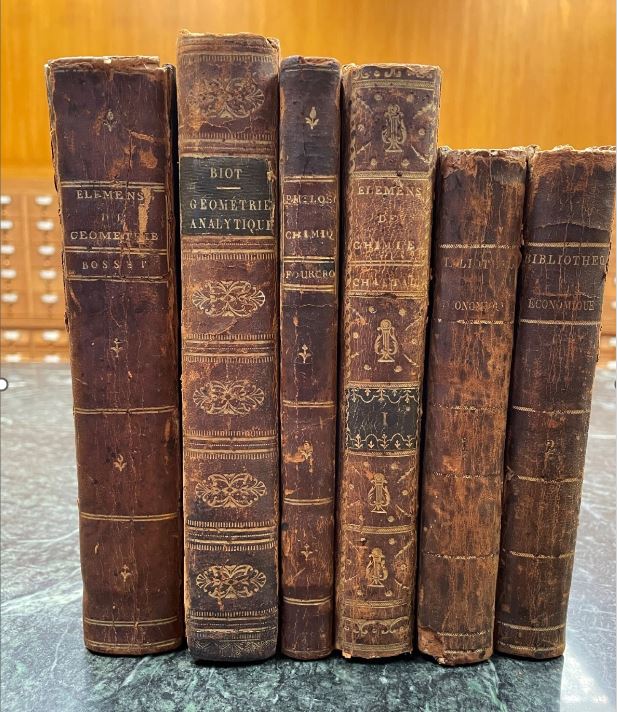We recently acquired a collection of late eighteenth century books (above) that had been stored in an attic at the Granogue estate for many years, likely dating back to 1923 when Irénée du Pont Sr. and his family moved into the newly built estate. Formal, natural, and social sciences are represented across the seventy volumes in this collection and are being attributed to collecting by Éleuthère Irénée du Pont de Nemours. The volumes were published between 1716 and 1823, and all but two were published in Paris. Before emigrating to the United States, E. I. and his father, Pierre Samuel du Pont de Nemours, were printer-booksellers in Paris and are represented as publishers in this collection.
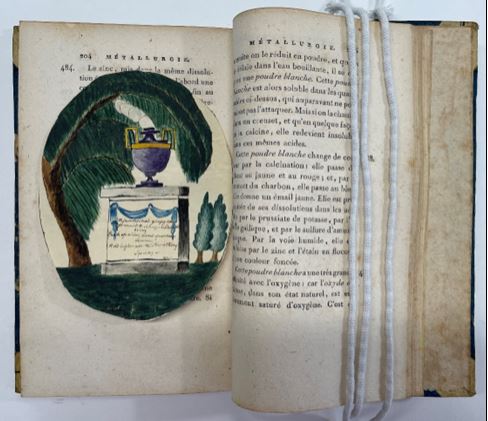
As bookbinding was done completely by hand in France until 1830, it was common for books to be sold unbound or simply bound throughout the eighteenth century. The purchaser would then take their books to be bound according to their budget and taste, with styles ranging from luxurious to utilitarian.
Luxurious bindings feature fine quality leather, elaborately tooled in gold, and leather doublures in the place of endpapers. Features of utilitarian bindings were full or partial leather coverings, simple, plain decoration, leather spine labels tooled with an abbreviated title in gold, and plain or marbled endpapers (see below). Calf and sheepskin were the leathers commonly used as they were the most economical for plain work. Another economical option was using leather and decorative paper as covering materials; these are known as half and quarter bindings.
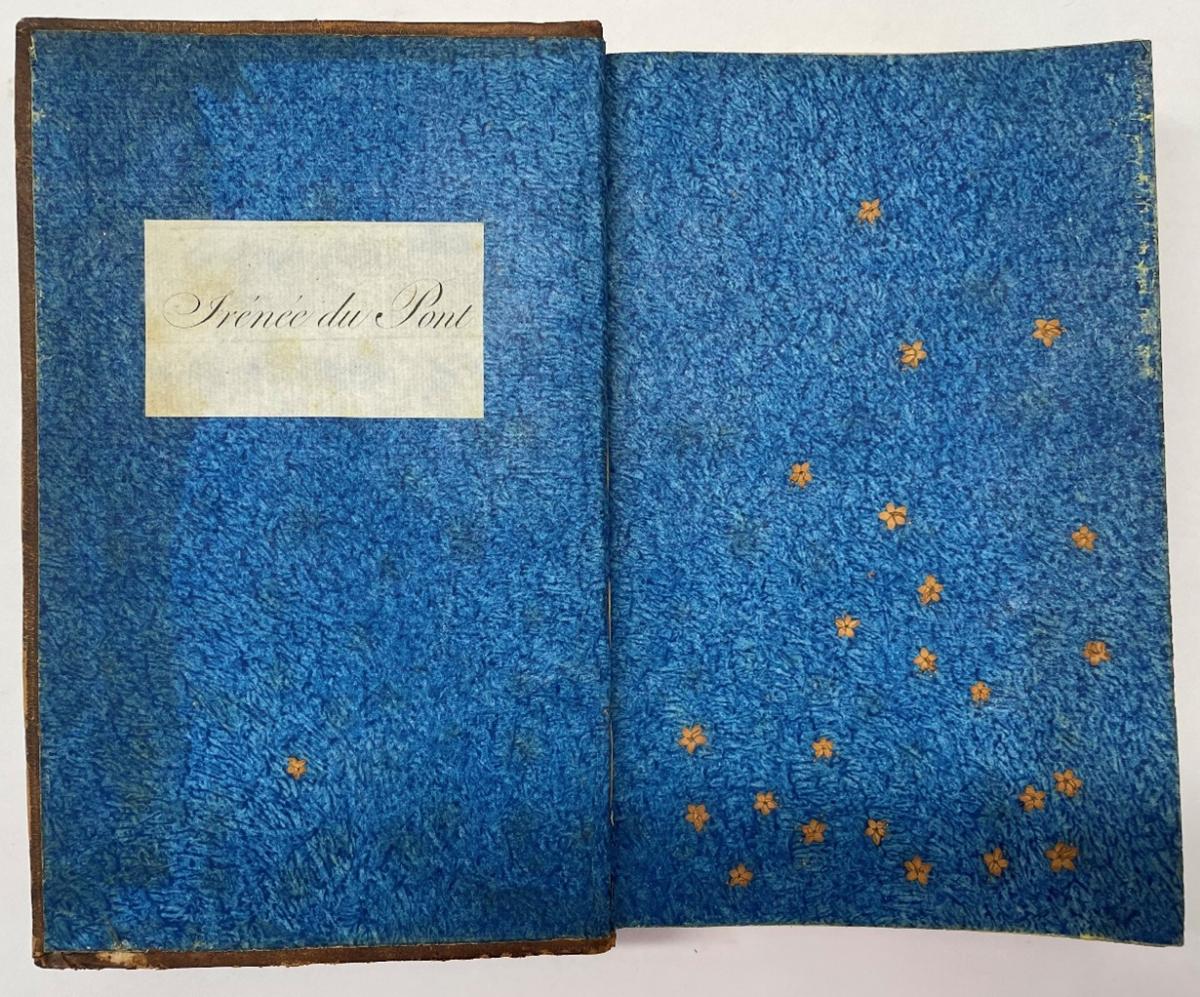
E. I.’s library falls within this utilitarian style category: plainly bound with minimal decoration on the covers, titled spine labels, and plain or marbled endpapers, indicating these books were bound to be used, studied; not just placed on a shelf and admired as attractive objects.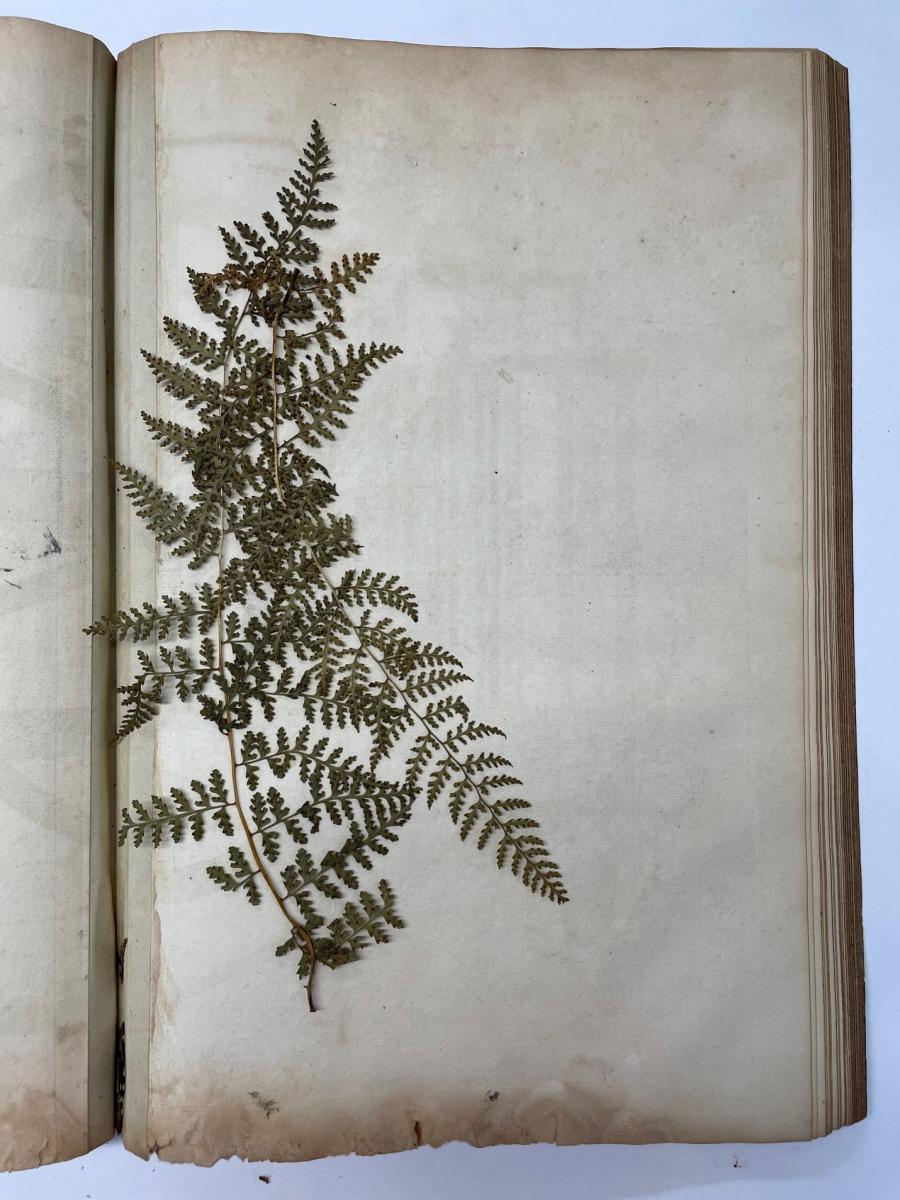
As part of our incoming collection workflow, I have been documenting the characteristics and condition of each volume, which involves looking at the different structural aspects of the book—the external structure (covering materials, format, treatment, decoration), the internal structure (sewing structure, spine style, spine shape, endband style), the text block (endpaper style, text block material, text, illustration)—and noting any identifying marks or inclusions within the volume.
It has been this final aspect of examining that has provided the most beautiful details of these volumes. An oval piece of paper with a painted scene; assorted pressed botanicals; and my absolute favorite: tiny, pressed flowers adhered across brilliant blue endsheets producing a star shower effect. It’s these little, often unexpected yet magical, details that provide a window into the life of the book's owner.
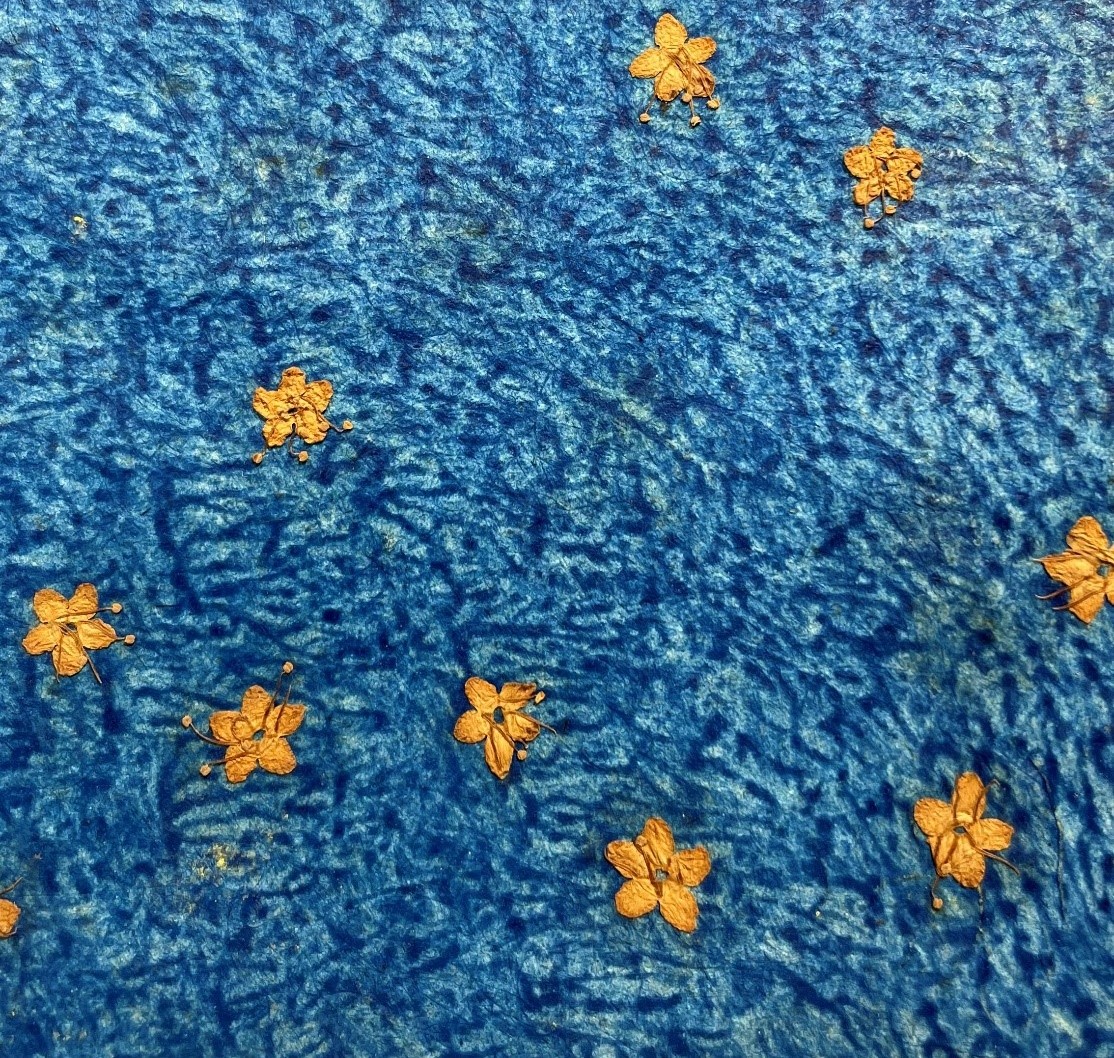
For more information on the scope of the E. I. du Pont de Nemours science library, read our companion piece: New Collection: E. I. du Pont de Nemours Science Library.
Sharon Fickeissen is the Senior Conservation Technician at Hagley Museum and Library

